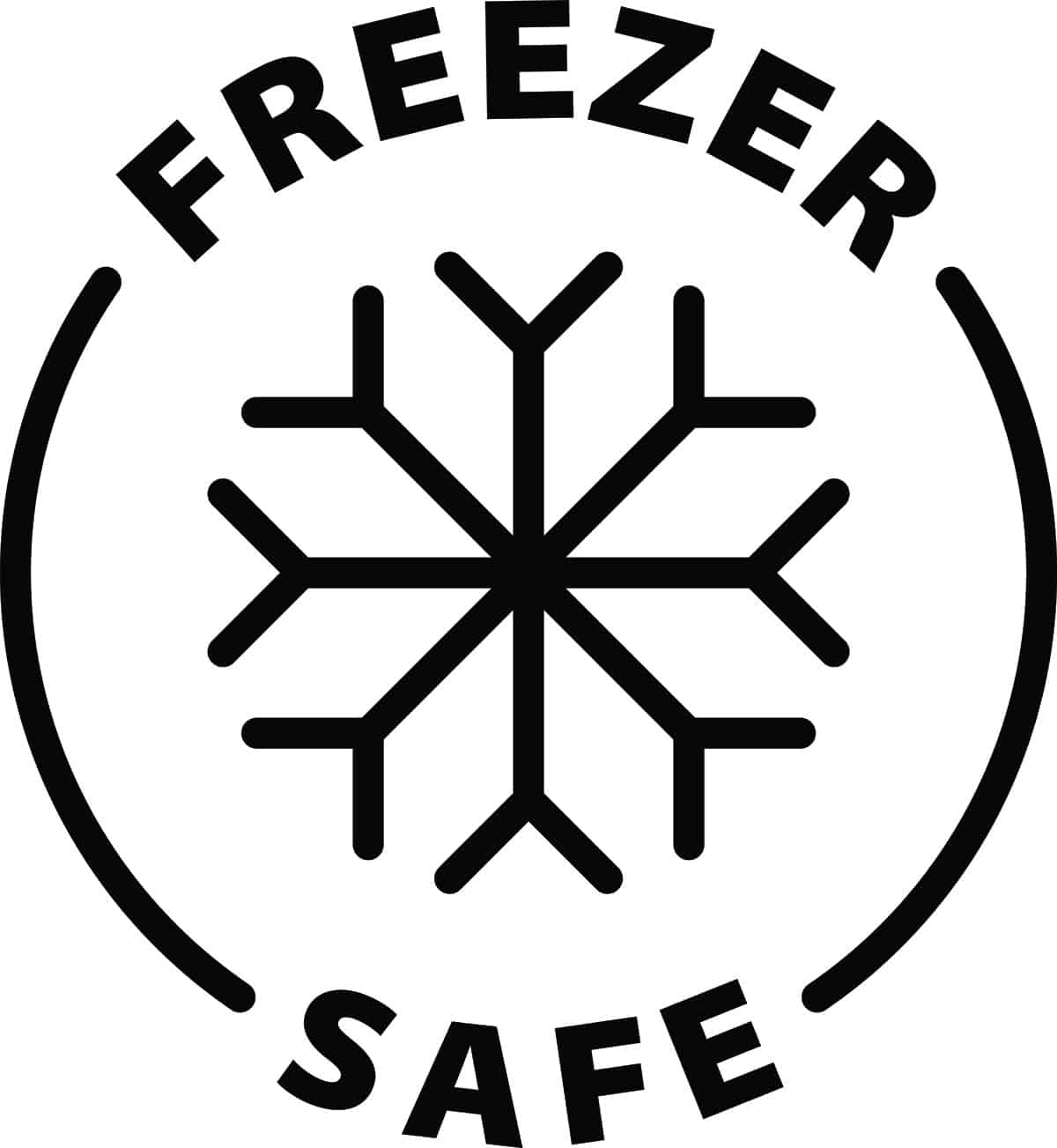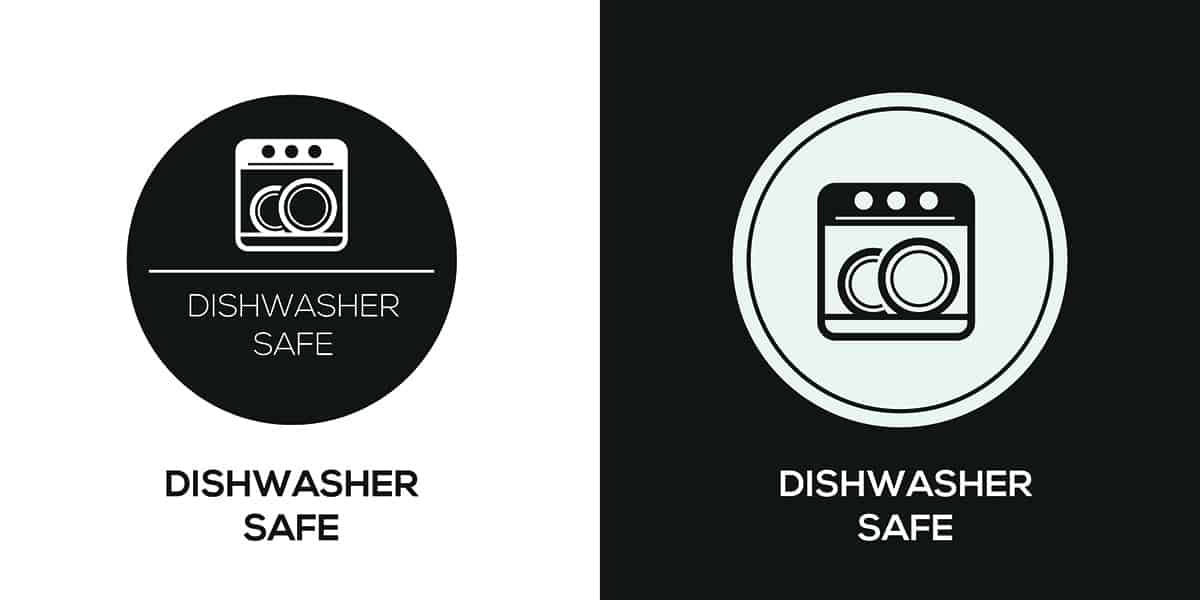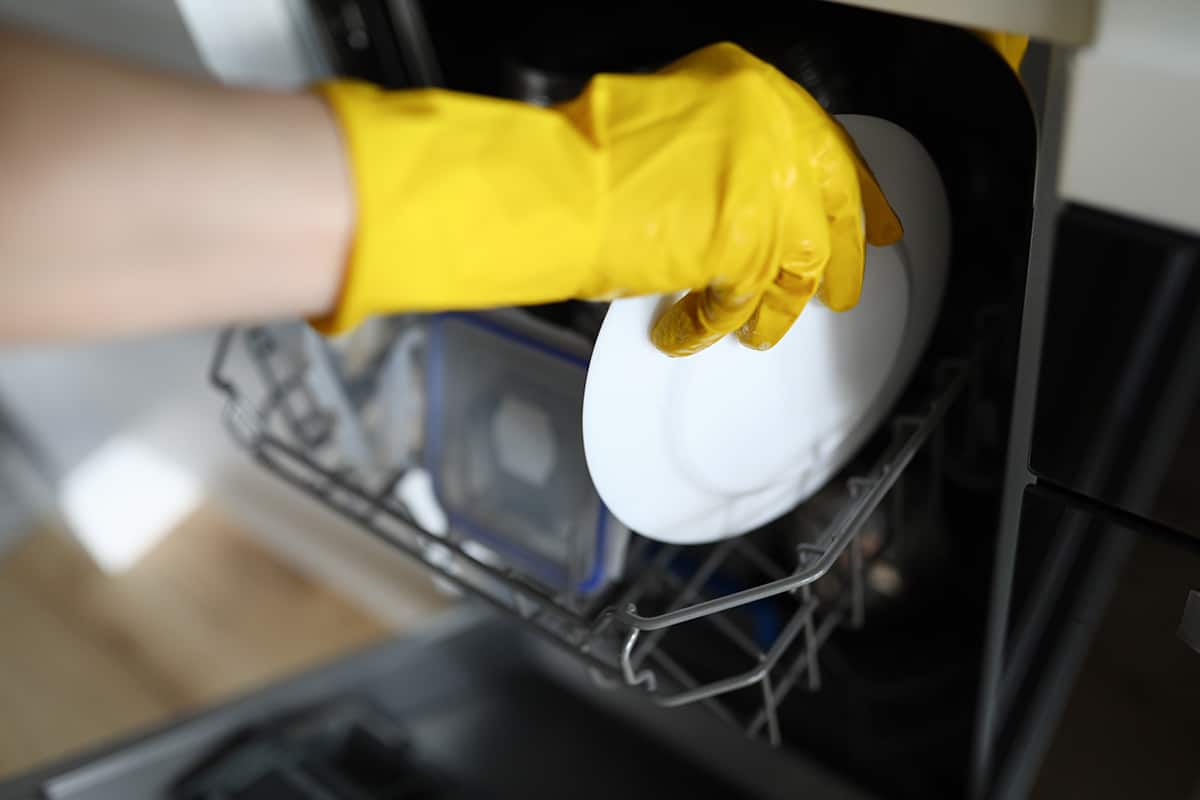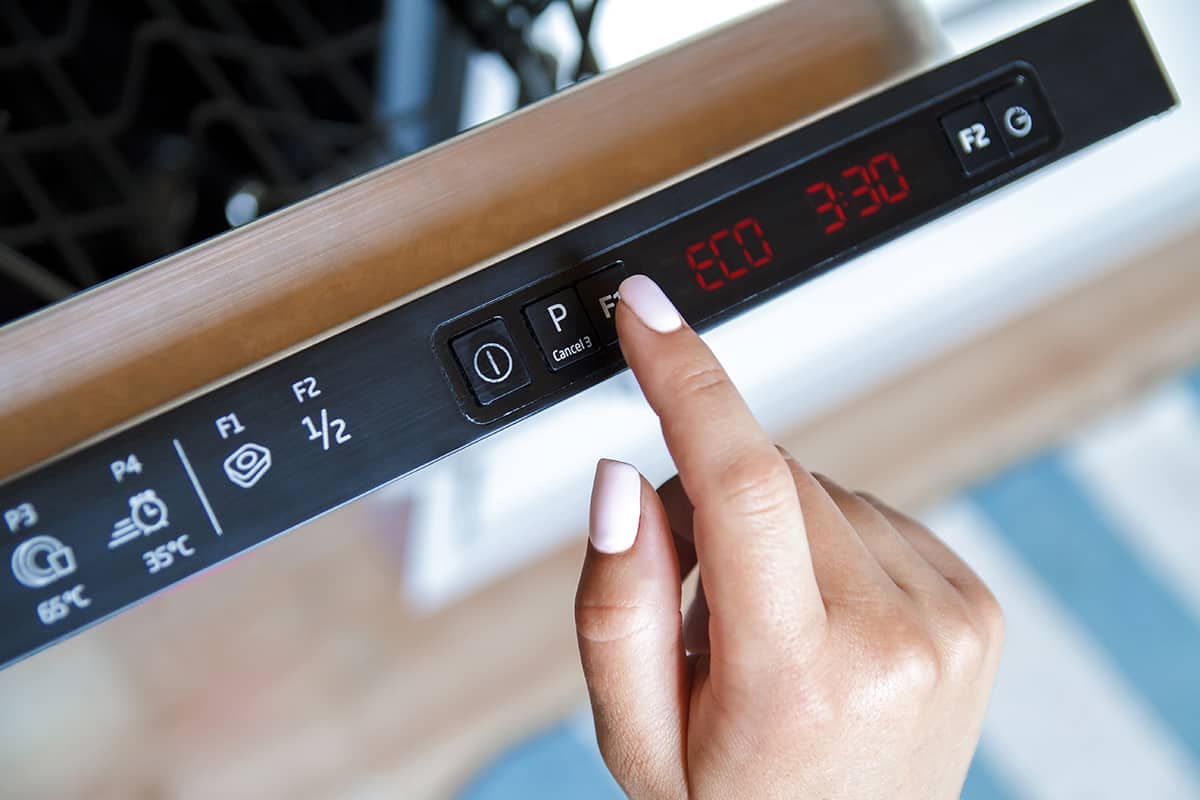Dishwashers wash dishes, right? So, that means you should be able to put any type of dish in a dishwasher. Actually, this is not the case. To tell whether a dish is safe to wash in a dishwasher, you need to look for a dishwasher-safe symbol.
The dishwasher-safe symbol looks like a square with rounded corners that has two plates in them. Another common symbol is an upside-down wine glass with tear-shaped water droplets.
In this guide, I’ll explain what the dishwasher-safe symbols look like, what dishwasher-safe actually means, and how to tell whether or not your dish is dishwasher-safe without the symbol.
What Is the Symbol for Dishwasher Safe?

Before popping a container into a dishwasher and starting a new wash cycle, you have to be certain that the dish is dishwasher-safe. Fortunately, you can usually tell whether a container is dishwasher-safe by looking for the correct symbol. What’s unfortunate is that there is no universal symbol for dishwasher-safe tableware, so the exact symbol may vary from brand to brand.
In general, there are three types of dishwasher-safe symbols. The first looks like two plates of different sizes standing upright with water spraying from above. There’s a symbol with a single plate made of 2 circles standing upright in a dishrack with rounded water droplets. The final symbol usually looks like an upside-down wine glass with water droplets.
The first two dishwasher-safe symbols usually mean that the dish is safe to wash anywhere in the dishwasher, but it usually belongs on the bottom dish rack. The third symbol means that it belongs on the top dishrack.
What Does “Dishwasher-Safe” Actually Mean?

What we usually take “dishwasher-safe” to mean is that a dish is safe to wash in a dishwasher. However, it’s a bit more complicated than that.
Tableware manufacturers may dub an item dishwasher-safe if they have treated it in such a way that it can withstand extreme temperature changes. Dishwashers use both heated and cold water to wash, soap, rinse, and sanitize your dishes. Without a dishwasher-safe symbol, there’s no telling how sudden changes in water temperature could affect the structural integrity or the color of the dish after a wash cycle.
To make matters slightly more confusing, each manufacturer usually has a different standardizing method for determining whether or not an item is dishwasher-safe. However, if it sports the dishwasher-safe label, and if you know whether the symbol means it belongs on the top or bottom dishrack, it’s not important to know how the manufacturer has treated their dishes to be dishwasher-safe.
Do Dishwasher-Safe Dishes Need a Special Detergent?
No, they do not. You can use dishwasher detergent to get rid of the leftover food particles from your dishes.
However, it’s important to note that dishwasher detergent is not like regular dish soap. It does not create a satisfying layer of soap. Instead, it relies on enzymes to loosen stains and wash them away.
If you were to put regular dish soap in a dishwasher, it would create a frothy mess inside the tub, and you would have to run multiple rinse cycles to wash the bubbles away. It sounds more fun than it actually is.
How to Tell Whether a Dish Is Dishwasher-Safe

If the dish or container sports the dishwasher-safe label, then you’re free to place it inside your dishwasher, making sure to mount it on the top or bottom dishrack according to the label’s instructions.
However, what if a dish doesn’t have a dishwasher-safe symbol? Here are a few things you can do to check whether or not you can wash a certain dish in a dishwasher.
No non-stick surfaces
The Teflon coating may peel over time. This applies to pans, skillets, pots, and cooking utensils. The exception is nonstick cookware that sports a dishwasher-safe label.
No cast iron
Although cast iron isn’t coated in Teflon or a specific nonstick material, you can make cast-iron skillets nonstick via a seasoning process (heat and oil). However, you should never wash a seasoned cast-iron pan in the dishwasher since it can strip the seasoning. You can reapply the seasoning, but washing with salt and a bit of water is much easier.
No wood
Wooden cutting boards, utensils, and dishware may look nice, but they require a ton of maintenance in order to keep them in tip-top shape. That’s not a reason to avoid purchasing wooden tableware, but you should know that wood is not dishwasher-safe. Water can get trapped inside the wood, which becomes the perfect breeding ground for bacteria and other nasty microorganisms. Wash wooden tableware by hand while using as little water as possible.
No insulating mugs or tumblers
We’re all aware of how eco-friendly tumblers and other reusable drinkware are. Anything you can use more than once (probably forever with the proper maintenance) means reducing your contribution to your local landfill.
However, you should always wash mugs and tumblers by hand since the temperature changes inside a dishwasher can warp the design of the drinkware, causing it to lose its insulating abilities.
No sharp objects
It might seem like a good idea to wash steak knives and kitchen knives in a dishwasher, but it’s actually not as brilliant as you may think. Dishwashers can be quite aggressive, which can dull the blade’s edge, forcing you to resharpen and hone the blade time and time again. The exception is if your dishwasher comes with a cutlery basket with a dedicated compartment for knives.
No fine crystal, china, etc.
Anything you inherited from your grandparents should not go in a dishwasher. Remember how I said dishwashers can be aggressive in how they clean? Well, the last thing you would want is to be busy picking out the fragments of a century-old platter from the bottom of the dishwasher tub. So, it’s better to err on the side of caution and wash valuable dishware by hand. Why are you even using fancy dishware?
No non-food-grade items
This might seem like a no-brainer, but you should avoid washing non-food-related items, such as kids’ toys and clothes, inside a dishwasher. Not only can they prevent water from spraying all over your dishes, but they might not be designed to withstand the heated water of a dishwasher (120° to 140° on average).
What Is the Fork and Wine Glass Label?
There are many tableware symbols you should know about, with one of them being the classic fork and wine glass label. There’s a common misconception that this symbol means “dishwasher-safe” when, in reality, it means that the item is made with food-safe materials.
So, things made of plastic, wood, Teflon, cast iron, and copper can all be food-safe, but that doesn’t mean they belong anywhere near your dishwasher.
What Does the Symbol Underneath Tupperware Lids Mean?
If you flip over the lid of a Tupperware container, you’ll usually find three arrows that form a triangle. That symbol means that it is safe to recycle.
There are certain types of plastics that should not go in a recycling bin, especially those made with chemical polymers that create an irreversible chemical bond. This type of plastic cannot be melted down and reused to make other things due to the level of chemicals in them.
What Is the Snowflake Symbol?
The snowflake symbol means that the dish is freezer-safe. The dish should freeze and defrost well without straining the materials, making it perfect for freezing liquids (leftover stew) and solids (fruit slices).
So, before popping a container in the freezer, make sure to look for the snowflake label. There will usually be a temperature rating (-40°C/+100°C) to let you know what temperatures it can withstand.






